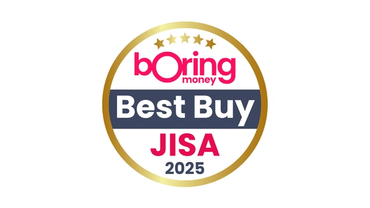Junior ISA
What’s a Junior ISA?
While it’s commonplace (and fun) to characterise younger generations as spoilt and over-sensitive, there are a number of ways in which life is more notably more expensive for them. Further education is no longer the freebie that we enjoyed, while housing costs take up a far greater share of their income. Kind parents may recognise this problem and want to give their children a head start.
Junior ISAs are one way to do that. They operate like a normal ISA: they are a tax wrapper into which you put cash, stocks or shares. Any growth or income in those investments is then tax-free. Parents, relatives or generous friends can all contribute up to a total of £9,000 a year (for the 2021/2022 tax year). Parents open and manage the account, but the money belongs to the child, who can withdraw the money once they are 18.
A child can only have one cash Junior ISA and one stocks and shares Junior ISA. If you buy a Junior ISA from one of the major investment platforms, there will significant choice of underlying investments, including collective funds, investment trusts and single shares.
Why do you need one?
They are a convenient way to build up a savings pot for future education costs or to put money on a house. It is worth noting that once a child hits 18, they can spend the money as they wish – and may not spend it in the same way as you wish. If this makes you feel uncomfortable, it may be worth using your own ISA allowance instead.
Junior ISAs offer plenty of choice of underlying investments and are generally low cost. While children don’t tend to pay a lot of tax anyway, it means you don’t have to worry about the administrative side – ISAs don’t need to be declared on a tax return, for example.
How do I get one?
The most flexible route is to open a Junior ISA is via one of the investment platforms. This will give you maximum choice at relatively low cost. Like an online bank account, you can go in at any time and check the balance (though this is a long-term game, so that isn’t necessarily a great idea) and it is relatively easy for your children to take on the account once they reach the right age.
You can also open a Junior ISA in cash through the major banks and building societies. This can feel like the safe option. However, it is worth noting that Junior ISAs will generally be accumulating for 10-15 years. That means you need the investment to keep pace with inflation. Cash ISAs generally pay a higher rate of interest than other savings accounts, but at 2%, many still trail inflation, which is currently running at 4%. That means the purchasing power of your child’s cash pot is falling all the time. As such, it is worth considering a stock market investment. The major investment platforms will have tools to help you pick the right one.
Are there any pitfalls?
The biggest problem with Junior ISAs is that the child is entitled to the cash at 18 and if they turn out to be reckless, you can’t do anything about it. While some have suggested not telling them about it, it’s probably not the path you want to go down.
The other risk is around investment. A bad choice can see the ISA worth less than you’ve put in. This is unlikely after 10 to 15 years, but can happen.
How much will it cost?
Junior ISAs are generally cheaper than standard ISAs. Fidelity, for example, doesn’t charge a service fee for its JISA. You will still have to pay for the underlying investments, however. This can range from less than 0.1% per year for an exchanged traded fund to 0.6-0.7% for an actively managed collective fund.
Helpful links:
Junior ISAs - Government website



